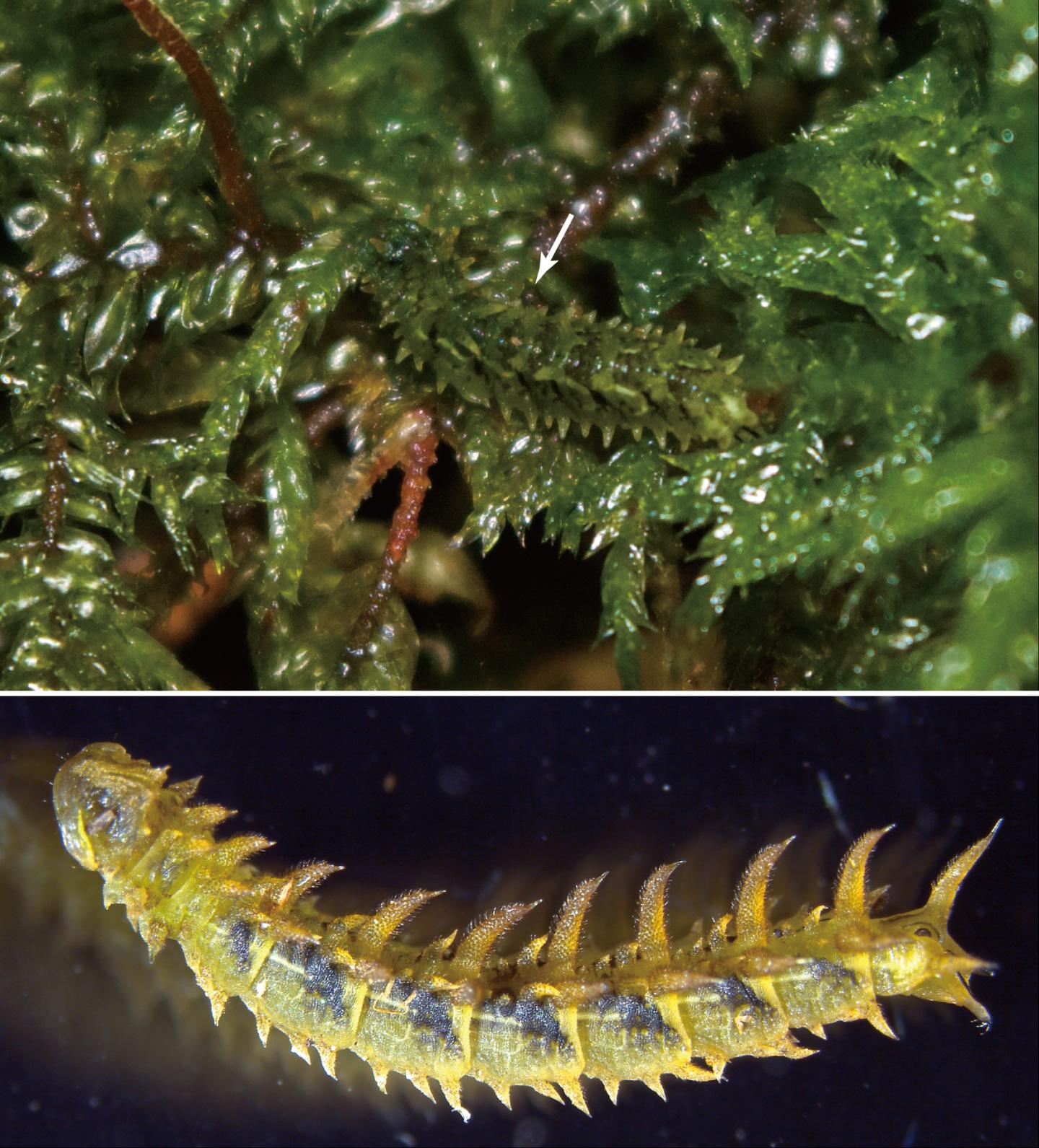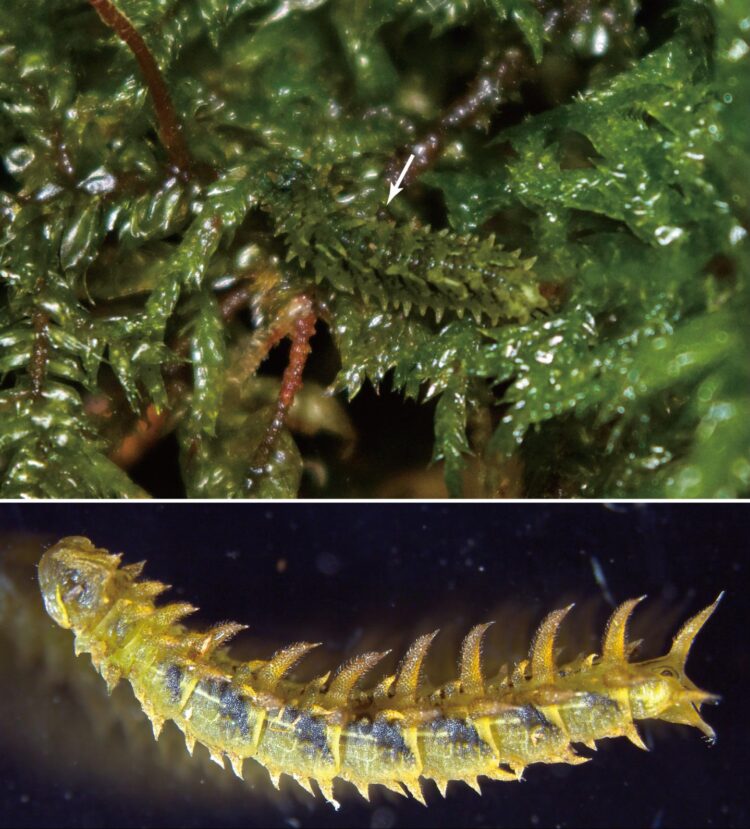“Fleshy lobes” in insect larvae are known as a tool for camouflage but it was found that they can also serve as a locomotion aid.

Credit: Yume Imada, Ehime University
Different physical structures play an important role in animal camouflage; however, they are rarely studied compared to the camouflage colors and patterns. All known larvae of long-bodied crane flies (Cylindrotominae) are plant-feeders, feeding either on mosses or herbaceous plants. The terrestrial moss-feeding larvae resemble mosses to a remarkable degree (Fig. 1). The larvae not only have cryptic coloration and patterning, but also are cloaked with special armature; cryptic, fleshy lobes surround their body on dorsal, lateral, and ventral sides. These complex traits serve to trick potential predators by obfuscating typical caterpillar-like outlines.
The question is how a device for camouflage (fleshy lobes) can evolve simultaneously alongside physiological, mechanical, and behavioral functions? After a ten-year pursuit of the larvae, Dr. Imada discovered eight cylindrotomine species in Japan and North America. She explored the link between their ecological background (i.e. habitats and food-plants) and various larval forms. Furthermore, she challenged the conventional explanation of the function of the fleshy lobes, revealing their roles in respiration, attachment, and locomotion.
Major findings of this study are:
- Larval morphological and behavioral (defensive behavior and locomotion) features are correlated with the species’ habitats, varying from fully terrestrial, submerged, to fully aquatic environments, and their food plants. Notably, the fleshy lobes were longest in aquatic species and are more complex, often with auxiliary outgrowths, in terrestrial moss-feeding species (Fig. 2).
- The fleshy lobes in aquatic species, which are among the longest, were previously hypothesized to be gills, by which the larvae absorb dissolved oxygen in water. However, this study did not support this view because they can take in oxygen through the spiracles, the same as terrestrial species, and examination of the ultrastructure of the lobe surface did not reveal evidence for respiration through the cuticles.
- Serial cross-sections of the body revealed that the lobes on the lateral sides contained muscles, whereas the dorsal and ventral lobes were simply thickened cuticles (Fig. 3). The musculatures were comparable to those in the prolegs of caterpillars. The result thus cast a new light on the lobes’ function as a mechanism for locomotion. The lateral lobes can assist the larvae in crawling.
Dr. Imada concluded that the cylindrotomine larvae live exposed on plants are more prone to predation than most crane flies living in organic mud. Also, the lobes may be adaptive for crawling slowly amongst wet, slippery moss carpets.
Two questions remain unanswered. First, soft, turgid appendages in larvae are curious structures which have evolved in many insect groups, and yet their structures and functions are largely unexplored. Second, the evolution of camouflage in Cylindrotominae remains paradoxical because there seem to be no records of keen-sighted predators, but it is yet to be shown that ground moss patches are enemy-free spaces.
###
Faculty of Science, Ehime University
http://www.
Media Contact
Public Relations Division
[email protected]
Original Source
https:/
Related Journal Article
http://dx.





